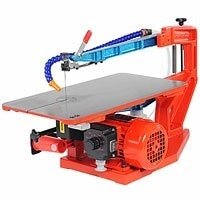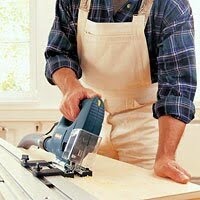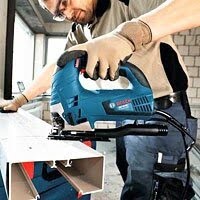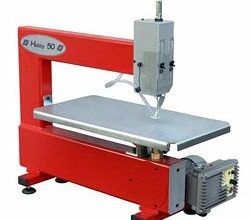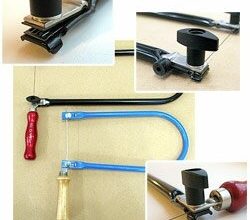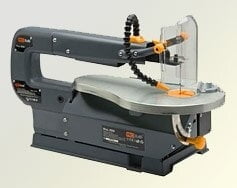Jigsaw types
Today’s electric tool market offers a wide variety of jigsaws of many brands and models that differ in terms of application, technical characteristics, type of power supply, and design features.
All jigsaws can be divided into two broad categories according to the nature of the application:
household jigsaws.
professional jigsaws;
jigsaws for industry.
To make it easier to select and purchase the right jigsaw for your needs, manufacturers often designate the purpose of the tool by the color of its body. For example, Bosch household jigsaws are green and professional jigsaws are blue.
Household jigsaws are not suitable for intensive use, but the low purchase price and enough power for household needs make them indispensable helpers of the home craftsman.
Professional jigsaws are highly durable and can be used for many hours (up to 8 hours in a row) daily. The high power of professional jigsaws allows you to work materials of great thickness. Improved characteristics and expanded equipment are reflected in the cost. Among professional jigsaws, you can also distinguish industrial jigsaws, which are more adapted to certain operations and features of the drive. For example, higher voltage power supply.
Industrial jigsaws, more often they are already machines, are designed for production work in the woodworking industry.
According to the type of power supply jigsaws are divided into:
mains
battery-powered.
Corded jigsaws are powered by a standard voltage mains supply. When performance is important, you should choose mains-powered jigsaws.
Cordless jigsaws offer greater mobility and independence from the availability of power outlets during operation. When buying a cordless jigsaw, pay attention to the type of battery. Lithium-ion batteries offer increased performance. The battery capacity determines the duration of operation without recharging, while the voltage determines the performance.
In terms of design features, it is difficult to make the same clear classification, as each company seeks to enrich its products with features designed to improve and facilitate the work of the tool. The essential parameter in this respect is the shape of the handle.
Two types of handles are well established:
D-shaped (staple-shaped) handle;
a mushroom-shaped handle.
A jigsaw with a staple handle allows for one-handed operation. This increases the scope of the jigsaw, but can have a slightly negative impact on cut quality.
The mushroom-shaped handle allows you to cut more accurately by holding the jigsaw with both hands while holding the workpiece to be cut. The choice of a jigsaw with a particular handle shape also depends on personal preference. Buy the jigsaw you feel most comfortable working with.
